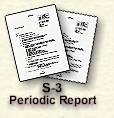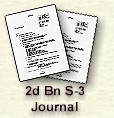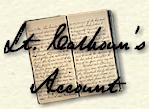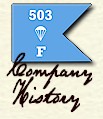
No. 9
231800I February 45
to
241800I February 45 |
3. OUR OPERATIONS:
a. Infantry:Our
assault on the eastern end of the ROCK, beginning at 1830I, met with an
immediate enemy counterattack in the vicinity of ENGINEER POINT which was
repulsed by tank and Infantry action. Further resistance was met at the
southwestern base of MALINTA HILL. Further west, strongest opposition was
met on the northern coast between ENGINEER and INFANTRY POINTS. At end of
period, our troops had advanced to the northwest-south-east line
(34.5-41.2)-(34.8-40.7). Mopping up on the western end of the ROCK met with
unexpected resistance on WHEELER POINT where the enemy has very Strong
emplacements. Our attacks were only moderately successful."
CASUALTIES:
a.
OUR CASUALTIES: To Date- (corrected totals): 123 KIA, 281 WIA, 29 IIA, 209
Jump IIA, 7 MIA.
b.
ENEMY KNOWN CASUALTIES: This Report- 704 KIA, 0 PW.
To Date- 3170 KIA, 6 PWs. |
|

#110 0300 |
34th Inf reported three explosions in
Malinta Tunnel and flames coming from all entrances. Two more loud
explosions followed at about 15 minute intervals and each time flames
lite the sky very bright. Set off by enemy. |
|
#111 0645 |
Flames
coming from all entrances of Malinta tunnels. |
|
#112 0830 |
Attack launched East of Malinta Hill supported by air-navy-and artillery
fire- opposition light. |
|
#113 0930 |
Navy blasting Wheeler Point with "D" Co standing by to clean out caves.
Very hard place and Nips in caves and well protected by concrete
emplacements. |
|
#114 1120 |
Rock Force east of Malinta Hill report front line to be line running
between 34.1-40.9 and 34.2-40.8. Tanks knocked out some resistance at
Engr. Pt. Tanks report banzai from Hospital tunnel and killed appx 50.
Also tanks to have destroyed 150 enemy on rd junt (33.9-41.0) |
|
#115 1435 |
A Co sealed five caves at 34.2-40.8
at 1300I. Reports on tanks killing appx 200 nips. |
|
#116 1525 |
A & C Co progressing well- resistance
still light. |
|
#117 1530 |
Bn C.P. at 34.1-41.0. B Co. between Art & Inf points & will reach Inf
point same time as "C" Co. |
|
#118 1630 |
Advance 1st Bn C.P. set up at
(34.08-40.95). |
|
#119 1655 |
1st Bn CP at (34.4-41.0). A Co
advance element at Camp Pt. B Co. mopping up Inf Report. C Co meeting
resistance at Inf Pt. |
|
#120 1900 |
Navy received fire from Monkey pt.
and returned fire with good results. |
|
#121 2130 |
Report from 1st Bn that mortar shell hit C.P.- killing Bn C.O., Maj
Woods-S-2- wounding quite a few. Source not known. Third Bn reports
believed to be from 34.2-41.3. Wounded evacuated at nite and searching
artillery fire placed on area. |
|
#122 0300 |
From XI Corp- 151 Inf to relieve 34th
Inf. |
|
#123 0745 |
Request of Navy fire by CO 3rd Bn. |
|
#124 0925 |
CG XI Corp reporting progress of Rock Force on East side of Malinta
Hill. |
|
#125 0950 |
Navy reports 550 Rds used on Wheeler Pt. |
|
#126 1120 |
CG XI Corp- situation report on Rock force East assault. |
|
#127 1435 |
Situation report from 1st Bn. |
|
#128 1525 |
Situation report from 1st Bn. |
|
#129 1530 |
Situation report from 1st Bn. |
|
#130 1630 |
3rd Bn C.P. at 34.40-40:95: |
|
#131 1655 |
Report from CO 1st Bt on progress. |
|
#132 1805 |
Report from CO 1st Bt on progress. |
|
#133 1900 |
Report to CO 1st Bn- Navy received
fire from Monkey point and neutralized the same. |
|
#134 1915 |
S-3 report to XI Corp by radio. |
|
#135 2330 |
Report on mortar fire that hit 1st Bn C.P. |
|
#135 2400 |
34th Inf with 1st Bn 503 made
assault. and Bn moved in at 1400 to support rear. Situation well in
hand. 1st Bn C.P. incident unfortunate but organization moved as
planned.
|
|
|
|
|
 |
"Company went on a patrol in
the same area which "E" Co had patrolled the day before. They patrolled
the area below the big gun position" (Battery Cheney) "and then started
along the shore to "Banzai Point." (Wheeler Point) "The company moved
around the point below the big gun position and started meeting enemy
resistance. Part of the company moved up along the high ground cleaning
out several caves along the way. Pfc. McCarey was killed"
(William J. McCarey) "and Drew and F. Keller were lightly wounded."
(Harry J. Drews and Prank B. Keller - Drews lost a leg from his 'light'
wound.) "The casualties were withdrawn to the beach and evacuated by
LCM. Co. proceeded to "Banzai Point" cleaning out several caves along
the way. When the Co. started back they were pinned down by machine gun
and sniper fire. The machine guns and snipers were in caves on the
hillside and could not be seen. They had the company's route of
withdrawal covered and supporting fire from ridges was very ineffective:
The CO called on LCM's to take them off the beach and started
withdrawing toward the beach. Holt and Combs were killed and Puckett
died of wounds; Finckler, Kurtz, Chistian, Rabe, Jenkins and Richard
were wounded during the withdrawal." (S/Sgt Robert V. Holt, Jr., Cpl
Kenneth Combes, Pfc Clifton L. Puckett, Pfc Frank Finckler, Pvt. Charles
H. Kurz, Pfc. Charles W. Christian, S/Sgt Harry W.Rabe, Pfc Floyd F.
Jenkins and Pfc Edward T. Rickard.) "When the Co. reached the beach they
were picked up by LCM's. The Co. moved up to the rear of Bn. and Regt'l
CP for a rest.
"Approximately 20 Japs were
killed during the day."
|
|
The S-3 Regimental Journal says very
little after referring to the action at Wheeler Point when E Company
withdrew 23 February. |
|
 |
"After Hill's company had
neutralized the Wheeler Point area Colonel Jones could begin to plan the
rest of his campaign to win back all of Corregidor." |
|
I expect D Company would
debate this point. E Company had approached Searchlight Pt. from the
east, while D Company's approach to Wheeler Point was from the west.
They both arrived at the same enemy defense.
These were the last attacks
made on Battery Monja by 503rd units. They all failed.
At least one heavily supported
attack was made later by an infantry battalion, but it, too,
failed. At war's end, Battery Monja had not been taken, and was the hub
of a small community of bypassed Japanese holdouts who did not surrender
until 1 January 1946.
|
 |
E
Company was sent to the beach to attack the Japanese in their prepared
positions in the
cliffs,
positions the Japs had prepared to defend against an attack from the
beach. This was exactly what the Japs wanted. E Company's attack was
futile.
They lost good men and were never able to locate
all
the Jap positions. The next day D Company was sent down to the beach and
caught in an ambush.
One
effective weapon was available. That was the direct
fire
of the naval guns into the Japanese positions in the
cliffs.
A destroyer was on call both days, but it was not used. Indeed the area
was shelled before the companies moved in, but specific
targets,
such as Battery Monja, were neither designated nor shelled while the
troops waited helplessly below. This brings to mind that aircraft,
which were on tap and looking for targets on 16 February could have
taken out Battery Wheeler with a well-placed napalm bomb, but were not
called in. How many times was help available but
not
used?
How many lives were lost?
So,
please, be understanding with small unit leaders who are
critical
of some command decisions. The powers that be do not have to witness the
last earthly moments of
the young soldier who had lived with the belief that "it won't happen to
me" and is now realizing that it
has happened to him. His thought are "No, not me! I don't want to die. I
want to stay with all of you. I want to go home again." So, please bear
with the grieving non-coms, the privates and Pfc's, the lieutenants, and
the captains. Allow them their moments of bitterness. They bear no
malice, but they have earned some rights. Those were brothers they
lost.
|

John Lindgren |
Don Abbott and John Lindgren visited Corregidor during the spring of
1987. They returned again during the spring of 1989 for a four week
stay, which gave them ample time to go over the areas of interest
thoroughly. John describes the Battery Monja area as follows:
"I
surveyed the entire area where D Company fought, both from the
probable enemy position 300 feet upf rom Wheeler Point
cliff at Battery Monja and
from the company's position on the beach below. I climbed to Battery
Monja and then boarding the banca again (of course after climbing
back down to the beach), sailed a half mile north and anchored at
the mouth of Cheney Ravine. Clumsily walking, half tripping and
falling, over the large loose round stones on the beach, I examined
the caves dug in the
cliffs near Cheney Ravine,
all the while keeping an
eye on Battery Monja halfway up the
cliff at Wheeler Point.
Another day I took Cheney Trail to the sea, the same route taken by
the Company and spent the day walking the same rock strewn beach
trying to understand what happened that bloody afternoon.
That day, the company had gone unmolested along the beach as far as
a small knob about 500 yards south of Cheney Ravine, but when they
moved around it they were
fired upon. The diary describes the small headland as "the point
below the big gun position"
(i.e. Battery Cheney). According to the war diary, the
company then proceeded to "Banzai" Point (i.e. Wheeler Point)
and turned back south to Cheney Ravine and came under
fire
as
they moved away from Wheeler Point. At this point
it was decided that the
company leave the area by LCM's that had been standing off shore
during the operation. The bulk of the casualties came when the
company moved from the positions near the bottom of the
cliffs, where they were
somewhat shielded from the fire,
to the open beach and the waiting LCM's.
It was probably only a
matter of minutes for the enemy gunners pouring
fire from the
cliff at Wheeler Point to the bloody beach below to
kill or wound nine men
from the 2d and 3d platoons. Accounts in the diary and elsewhere are
confusing when they try to explain the source of enemy
fire. There can be
little doubt the
fire came from positions
at Battery Monja.
|

Tony Sierra |
Tony Sierra was there with the 3d platoon that had two killed and three
wounded on the beach. His recollection of the fight is slightly
different.
"The company reached the small knob below Battery Cheney and was
stopped and never went forward from there. The company
withdrew
on
LCM's from this point about 500 yards from Cheney Ravine and never
reached Wheeler Point."
|

John Lindgren |
"I believe Sierra's account is the correct one. If you read the diary
for 24 Feb 45 and change one word, both accounts are nearly the
same. The diary reads "Co proceeded to 'Banzi
(sic)
Point..." but if you change "to" to "toward", then Tony's account
is substantially the same."
A month or two later, a patrol from the 151st Infantry, that remained on
Corregidor after we left,
supported by a destroyer, and several amphibious vehicles firing 20mm
guns, went into the same beach south of Wheeler Point. They withdrew
when their force was raked by heavy fire from the
cliffs above. They did not
return. They tried to close the battery by inducing landslides and took
other measures. But after it all, Battery Monja remained an unconquered
Japanese stronghold. They abandoned it on New Year's Day 1946 when they
donned their best uniforms and surrendered. Don Abbott and I may
have been the first (and
perhaps only) people from the 503d or the 151st Infantry, for that
matter, ever to reach the position. At that, the sturdy fortress
still held out;
it took two attempts, two
years apart before we were ever to reach the redoubtable Battery Monja."
|
|
|
|
|
|
|
 |
"E" company ran into all the
action yesterday. They got over 100 Nips in some tough fighting- just
smoking them out of tunnel with grenades and bazookas. The cost was two
killed and three wounded. Our battalion otherwise was inactive. We had
the same perimeter last night, with 75's and mortars banging away all
night-bless 'em. This morning the mortar platoon laid down a 25 minute
barrage on the ravine between Wheeler and Rock Point."
The barrage must have been laid in
Cheney ravine ahead of D Company. There are two ravines between these
two points, Cheney and Grubbs.
"Today we are able to send out
mail. Coveralls are available for salvage. I wish they'd hand them out
so we could peel ours off our skins." |
|
|
|
 |
The company is remaining on
the perimeter today to rest up and get its ammunition resupplied." |
|
|
|
 |
No Entry |
|
|
|
 |
F Company was patrolling the Way Hill-Sunset Ridge area
to the sea from Cape Corregidor to The Rock Point area. This included
Battery Grubbs. The 1st platoon continued to patrol the coastal region
and Sunset Ridge. We broke up into squad patrols in order to cover more
ground. Pfc Delby Huff found a large Jap ensign in a dark cave in the
Sunset Battery area. I traded Huff a pistol for the flag and in
August 1991 gave it to the Nimitz
Museum in Fredricksburg, Texas. Many medical supplies were found in this
area, and another medical dump was found at Battery Rock Point. Many
medical chests (gray with white circle in which was a red cross) filled
with bandages and dressings. Large amounts of medications were found. We
found a binocular microscope in its wooden case and a large chest, about
the size of a steamer trunk, packed with dental forceps. These were new
forceps covered with cosmoline and wrapped in-heavy waxed paper. We took
the microscope to Bill Bailey, because we knew that he planned to go to
medical school after the war. We decided that Doc Eppleman (Capt Herbert
Eppleman), our regimental dentist, should have the forceps. Getting this
heavy chest to Topside took some doing. This was when we started the
Chevrolet truck with some hopes of hauling the chest; however, as said
before, the radiator was full of holes. Too, as said before, we could
not have gone far because of the craters in the
road.
During this time Major General Marquat showed up often at
the light house. He always seemed to be feeling no pain. He wanted to go
with us on a patrol, but we managed to avoid this. He always came with
several loaves of bread which quickly disappeared. Sgt Todd told me that
the general was trading bread to the 1st platoon for whiskey. I never
saw any evidence of any of the members of this squad drinking or
possessing any liquor and the general was happy, so that was all there
was to that.
General
Marquat had commanded Fort Mills at one time and was considered an
expert on the fortifications of the fortress. One day I complained about
our lack of knowledge of the island. I asked him why weren't we given
drawings, maps, etc., so that
we would know where the tunnels were, what the " details were of the
fortifications and other details which would have been of great value to
us. The general looked at me condescendingly and with studied patience
informed me that drawings and detailed maps of Corregidor were
"Top Secret."
|
|
 |
Some of us who have studied
Corregidor post-war now have copies of some of Japan's pre-war
maps of Corregidor, and they certainly knew the details. These were used
in the attack of the island.
General Marquat was a very
nice person, though. Having commanded there, he was hurt over the
destruction wrecked on his former post. He was having troubles with
living in the past. This is a common malady among many, even today, who
were once closely connected to Corregidor..."the golden days".. The
magic rubs off
on
those of us today
who study it. Had I been in
the general's place I probably would have stayed drunk...
|
|
|
 |


![]()



